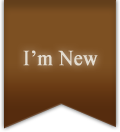To say that Ezekiel’s actions were strange would be an understatement. Previous prophets like Jeremiah had used props in their preaching: pointing to a pot being fashioned on a wheel (Jeremiah 18:3-4) or breaking a ceramic vessel (Jeremiah 19:10). Jeremiah had even worn a sash or waistband and then hid it by the Euphrates River to emphasize how God would send His people away from Him into exile (Jeremiah 13:1-11).
But God told Ezekiel to go further, to act out the great drama of the siege of Jerusalem. He was to inscribe a map of the city onto a clay brick or tablet, and then surround it with models of besieging soldiers and their matériel (Ezekiel 4:1-2). He was to put an iron griddle between himself and the city, illustrating how God would refuse to hear the city’s pleas for relief (Ezekiel 4:3). And he was to eat the sort of scanty rations that the inhabitants of the besieged city would have to endure: only 8 ounces of bread and a pint of water a day. Oh, and he would have to cook his food over burning dung, the only source of fuel that would be left in the city (Ezekiel 4:9-12).
But that wasn’t the strangest thing. He was to be tied up with ropes and placed on his left side for 390 days, to “bear the iniquity of the house of Israel” (Ezekiel 4:4-5). Then he was to repeat the process on his right side for 40 days to “bear the iniquity of the house of Judah,” with each day representing a year of their coming suffering (Ezekiel 4:6). Such an exercise would certainly have been excruciatingly painful.
So, what did all this mean? Most obviously, Ezekiel was warning the people of the pain and privation that awaited them because of their consistent disobedience and infidelity to God. But I wonder if there isn’t another, more subtle message in his actions as well. After all, verse 3 says that there was to be an iron plate between Ezekiel and the city, representing the way God had been shut out of His people’s lives. So, why would Ezekiel put himself through the pain of God’s people while he was also representing the God from Whom they had alienated themselves?
Looking at the cross, we know the answer. For the cross also carries two messages at the same time. It graphically illustrates the pain, the shame, and the separation from God that all of us sinners deserve. But at the same time, it shows us that the Son of God went through all of that pain and shame for us, bearing our iniquities so that all who trust in Him might be saved.
The people of Ezekiel’s time saw his gruesome warning, but remained unmoved (Ezekiel 3:7). Will we humble ourselves before the Christ of the cross? Or will we insist on going through all that pain for ourselves?
Ezekiel 4:1-8 (NASB)
“Now you son of man, get yourself a brick, place it before you, and inscribe a city on it, Jerusalem.
2 “Then lay siege against it, build a siege wall, raise up a ramp, pitch camps, and place battering rams against it all around.
3 “Then get yourself an iron plate and set it up as an iron wall between you and the city, and set your face toward it so that it is under siege, and besiege it. This is a sign to the house of Israel.
4 “As for you, lie down on your left side, and lay the iniquity of the house of Israel on it; you shall bear their iniquity for the number of days that you lie on it.
5 “For I have assigned you a number of days corresponding to the years of their iniquity, three hundred and ninety days; thus you shall bear the iniquity of the house of Israel.
6 “When you have completed these, you shall lie down a second time, but on your right side, and bear the iniquity of the house of Judah; I have assigned it to you for forty days, a day for each year.
7 “Then you shall set your face toward the siege of Jerusalem with your arm bared, and prophesy against it.
8 “Now behold, I will put ropes on you so that you cannot turn from one side to the other, until you have completed the days of your siege.



